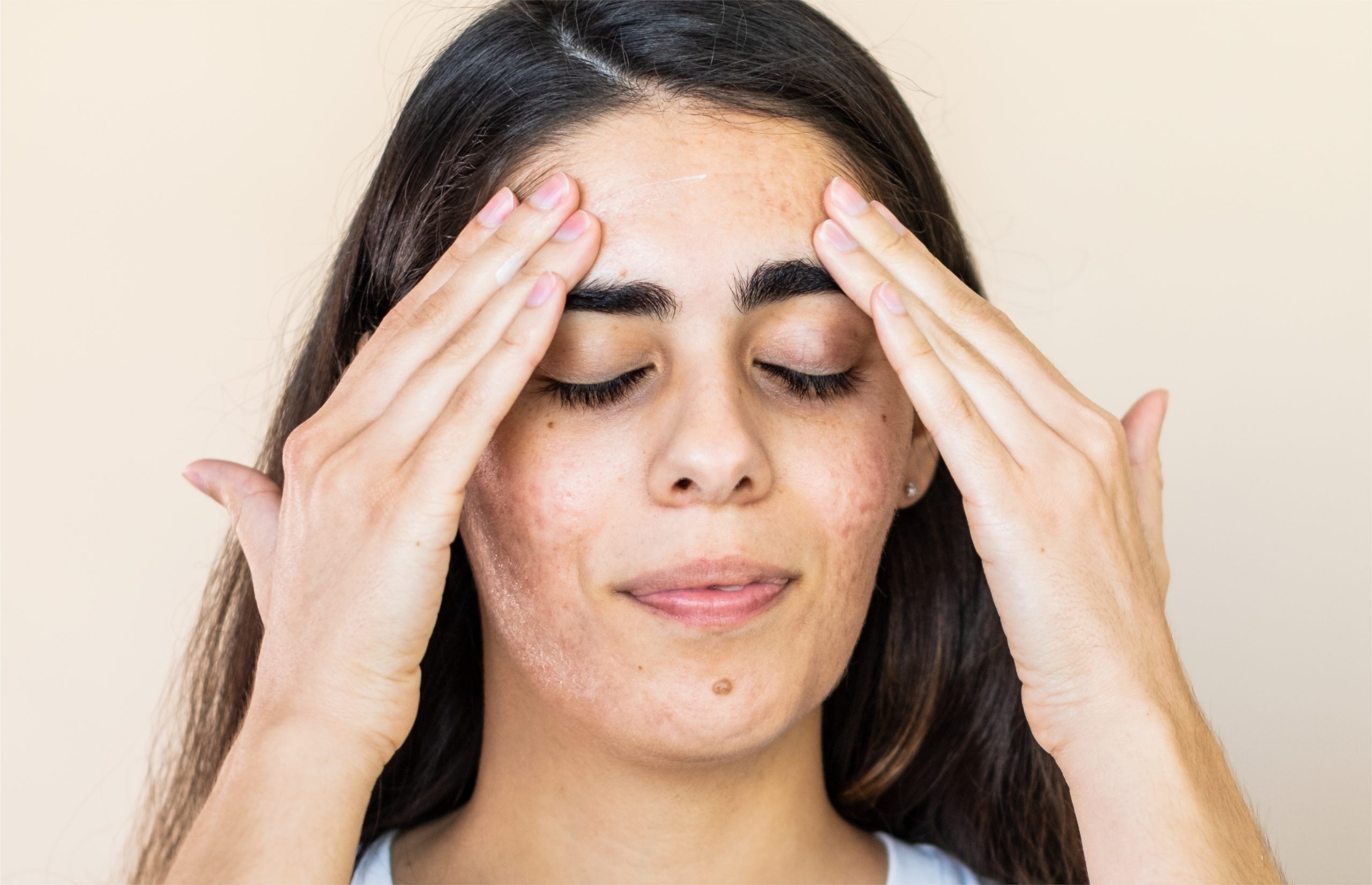Table of Contents
I’ve been an esthetician for over 30 years, so as you can imagine, I get asked many questions about skincare. Whether it’s in person, on Instagram, or through my popular skincare blog, I’m constantly sharing advice. One of the most common questions I get asked is, “How should I apply my products, with a rubbing or pressing motion?” This is an important question because the way you apply products will change their efficacy (yes, really!). Keep reading to learn how to apply skincare products the right way.
Rubbing vs. Pressing
Let’s start off by talking about the benefits of each application method.
The Benefits of Rubbing
The benefit of using a rubbing motion is that it can boost circulation. When using a gentle, circular motion, you’re temporarily increasing blood flow to the skin, which can bring a glow to the complexion and aid in lymphatic drainage. This can benefit specific skin types (like Skin Type 7) that are prone to dullness. This is the method I personally use since one of my main skincare goals is to get more circulation in my skin. Stimulating blood flow helps bring fresh oxygen and nutrients to the skin (I also use this 2-minute trick every night for glowing skin).
However, if you have sensitive or redness-prone skin (like Skin Types 5 & 9) you should avoid this method. It could be overly stimulating and contribute to even more redness, which is precisely what you want to avoid. The same goes for those dealing with chronic hyperpigmentation (like Skin Type 8). Too much stimulation can activate already overactive melanin cells—the culprit behind those pesky brown spots. Gently rubbing shouldn’t be too much of an issue as long as you have something to provide slip, such as a moisturizer or cleanser. That said, vigorous rubbing should be avoided, and you may be better off following the pressing method.
The Benefits of Pressing
When I used to travel to France to study skincare, I noticed that French estheticians would promote a patting or pressing technique when applying product to the skin. When I asked about it, they told me it benefits the skin in two ways. First, it’s a more gentle application technique than rubbing. Second, by pressing a product into the skin with gentle pressure, you may enhance absorption.
FYI, another great way to enhance absorption is by applying your products onto slightly damp skin. (This is why I always suggest leaving an alcohol-free toner damp before applying your serum or moisturizer, to allow for that effect.)
The Verdict
So, how should you apply skincare products, with a rubbing or pressing motion? My answer is that it truly depends on your skin type. If you’re looking to brighten your complexion and get a glow, I suggest a gentle rubbing motion. The key word is gentle. You shouldn’t be rubbing aggressively or using too much pressure.
If your skin is more sensitive or you have redness, I suggest using a pressing technique. This will keep your skin calm. It might even enhance absorption!
It’s also worth noting that it can depend on the product you’re using. For example, eye creams are best applied with a gentle pressing motion, as skin in this area is particularly delicate. Sunscreen, on the other hand, is best applied with a gentle rubbing motion. This will ensure a more even application.
Next, this is the most effective way to apply toner.
Celebrity Esthetician & Skincare Expert
As an esthetician trained in cosmetic chemistry, Renée Rouleau has spent 30 years researching skin, educating her audience, and building an award-winning line of products. Her hands-on experience as an esthetician and trusted skin care expert has created a real-world solution — products that are formulated for nine different types of skin so your face will get exactly what it needs to look and feel its best. Trusted by celebrities, editors, bloggers, and skincare obsessives around the globe, her vast real-world knowledge and constant research are why Marie Claire calls her “the most passionate skin practitioner we know.”






More Stories
CoolSculpting for Valentine’s Day!
‘Gold standard’ star holds a record number of elements
How Hearing Loss Is Changing Around The World